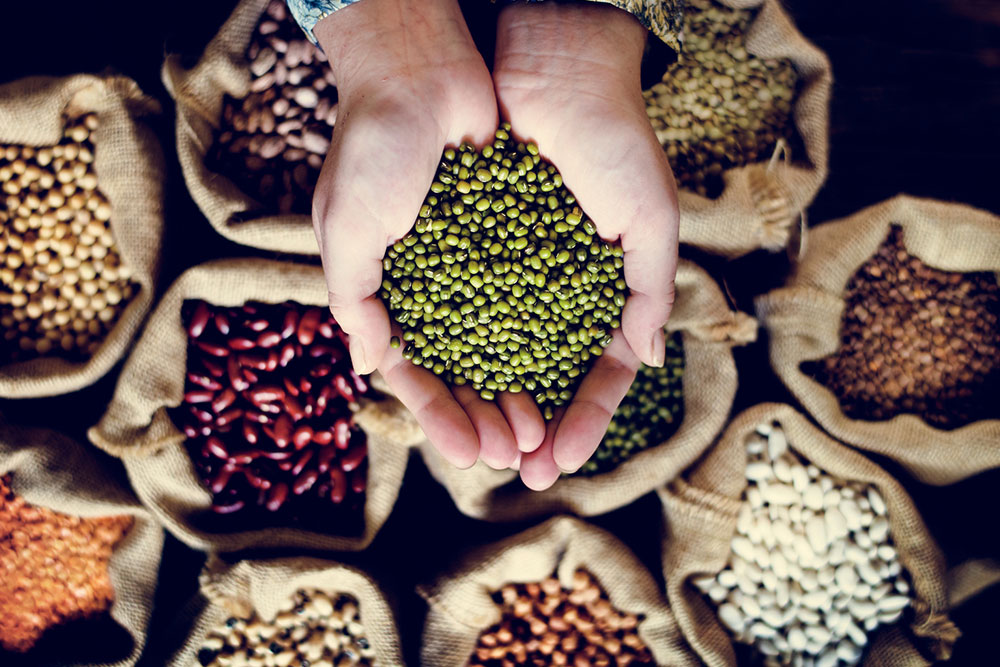
10 healthy foods that are high in fiber
Eating balanced meals can be challenging in today’s fast-paced world. Still, our body needs an abundance of vitamins and minerals to function well. In addition, it needs fiber to maintain healthy digestion, normalize bowel movements, and support other bodily processes. Luckily, several foods are high in fiber and can help people meet their required daily intake. Mentioned below are ten fiber-rich foods to add to the meal plan for good health.
Legumes
Legumes, such as lentils, black beans, and chickpeas, are fiber powerhouses. Besides providing a healthy dose of fiber, they pack plant-based protein, making them a staple in vegetarian and vegan meals.
Brown rice
Whole grains are among the best foods with high fiber. Options like oats, quinoa, brown rice, and whole wheat pasta are full of fiber, helping people stay energized for extended periods.
Apples
Apples provide both soluble and insoluble fiber, making them an important food to incorporate into the nutritional regime. Soluble fiber regulates blood sugar levels and lowers cholesterol, while insoluble fiber adds bulk to the stool and promotes regular bowel movements.
Broccoli
Broccoli, carrots, artichokes, and Brussels sprouts are just a few fiber-packed vegetables. These colorful additions offer a variety of vitamins and minerals along with fiber.
Almonds
Almonds are a good source of healthy fats, protein, and fiber. They make for a convenient and satisfying snack but must be enjoyed in moderation.
Psyllium husk
Derived from the seeds of the Plantago ovata plant, psyllium husk is a soluble fiber powerhouse. It can be mixed with water and incorporated into recipes.
Chia seeds
These tiny seeds are packed with fiber, especially soluble fiber, which can absorb water and help keep one full for longer. Individuals can add them to smoothies or yogurt or make chia pudding for a satisfying snack.
Quinoa
Quinoa is a versatile whole grain that’s not only high in fiber but also a great source of protein. It can be used as a base for salads, eaten as a side dish, or added to breakfast bowls.
Edamame
Edamame, young soybeans, is a protein and fiber-rich snack. One can steam or boil them and sprinkle sea salt for a tasty, nutritious treat.
Flaxseeds
These seeds are an excellent source of both soluble and insoluble fiber. A single tablespoon of flaxseeds provides about 2.8 grams of fiber. Incorporating flaxseeds into the meal plan can help improve daily fiber intake.
Best high-fiber snacks to consider
Besides eating the foods mentioned above, one can try these five best high-fiber snacks. These recipes are delicious, nutritious, and easy to prepare:
Trail mix
Trail mix is a blend of nuts, seeds, and dried fruits like almonds, walnuts, pumpkin seeds, and raisins. While it is a satisfying and fiber-rich snack, individuals must be mindful of portion sizes to keep the calorie count in check.
Greek yogurt with berries
Greek yogurt is a fantastic source of protein and pairs perfectly with high-fiber berries like strawberries, blueberries, or raspberries. One can drizzle honey for a touch of sweetness.
Hummus and veggie sticks
Hummus, made from chickpeas, is a fiber-packed dip. Individuals can pair it with colorful veggie sticks like carrots, celery, cucumber, and bell peppers for a crunchy and satisfying snack.
Oatmeal
A bowl of oatmeal made with whole rolled oats is a fantastic high-fiber option. One can top it with sliced bananas, chopped nuts, and a drizzle of honey for added flavor.
Air-popped popcorn
Air-popped popcorn is a great fiber source. While one can sprinkle some nutritional yeast or a light seasoning for extra taste, it is best to avoid butter.
These snacks not only keep one’s taste buds happy but also provide the health benefits of increased fiber intake.
Benefits of high-fiber foods
Following the high-fiber foods list mentioned above can:
Promote healthy digestion by preventing constipation and facilitating regular bowel movements.
Help one feel fuller for longer, reducing overall calorie intake.
Help stabilize blood sugar levels, making it particularly beneficial for individuals with diabetes.
Lower cholesterol levels and reduce the risk of heart disease.
Support a healthy colon and help reduce the risk of colon cancer.
Incorporating these high-fiber foods into daily meals can positively impact one’s health. They may support physical well-being and contribute to a happier, healthier life. However, individuals must increase fiber intake gradually and drink plenty of water. It’s also essential to avoid excess fiber. One can visit a nutritionist or healthcare professional to learn about the foods that are safe and healthy for them. The expert can recommend the right way to incorporate fibrous foods to avoid complications.




